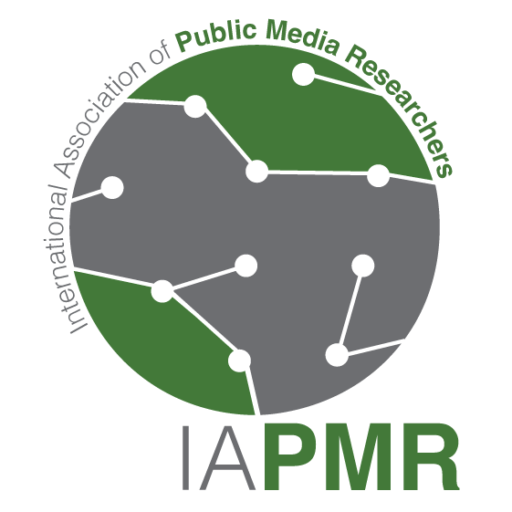RESEARCH INSIGHT
It’s about trust: Public service media and disinformation
21st August 2024
Mis- and disinformation in elections, fuelled and exacerbated by social networks, is not a new phenomenon. Public service media are often credited as an antidote. Is this deserved? And does it mean societies are now better prepared and equipped to deal with ‘fake news’?

By Minna Horowitz, Docent / Researcher at the University of Helsinki, and Marius Dragomir, Director of the Media and Journalism Research Center.
Disinformation – its sources, topics, dissemination, and impact – has arguably been one of the most discussed and researched communication phenomena in the past decade. Yet, what we really know about ways to counter it is not evident. To start with, no single, unified, definition for disinformation or so-called ‘fake news’ exists. To add to this definitional ambiguity, acquiring a comprehensive picture of disinformation spreading online is difficult because researchers do not have sufficient access to platform data to get a general overview of the prevalence of disinformation, its themes, sources, and so on. The Digital Services Act of the European Union (EU) aims to improve access to data for independent researchers, but how it will be implemented in practice remains to be seen.
It is also not easy to document people’s encounters with disinformation and the consequences through research. For example, in national surveys, people generally report on disinformation based on their own experiences, but it is not possible to verify whether they have “actually” encountered false content and what those experiences mean to them. One can track the spread of a false post on social media, but again, it is difficult to determine the impact of disinformation—unless there are obvious, direct consequences, as for instance, recently in the UK or earlier in Myanmar. Even the U.S. 2016 elections, the Capitol riots in 2021, or the UK Brexit vote cannot be blamed solely on disinformation: arguably, they are a combination of factors, such as the challenges of media systems, internal political context, and, in some cases, foreign information manipulation attempts. Some scholars posit that too much effort is placed into analysing individual disinformation campaigns when the root causes of the phenomena and related consequences are societal and political.
What various types of research do seem to indicate is as follows: The experience and impact of disinformation are influenced, on the one hand, by an individual’s alertness and media and information literacy (MIL), and on the other hand, by the (national) media environment in which they live – even in the age of global social media. Some studies have shown that the structure of society and the robustness of the national media system have an impact on resilience against false online communication. MIL has also been assessed from many angles. As an example, an annual comparison of literacy against disinformation highlights the importance of the combination of education, press freedom, e-participation opportunities for citizens, and interpersonal trust.
Research, unexpectedly, seems to suggest that the success in staving off the effects of disinformation is affected, to a large extent, by a society’s ability to secure trustworthy societal systems and structures, a society’s support to knowledge institutions that elicit trust, and a society’s efforts to strengthen citizens’ MIL so people are able to identify trustworthy sources. In sum, at the center is a healthy level of trust. Trust is especially important in elections, which is one of the most impactful democratic actions available to citizens.
Disinformation is a complex, contextual, ever-evolving phenomenon that is simultaneously a global and local phenomenon. That is why it requires national policy focus and related localised activities.
If disinformation erodes trust in societal systems such as public service protocols and practices, and trust in one’s fellow citizens is challenged, the consequences for society are devastating. Trust in institutions such as national mainstream media can erode quickly if an individual or group feels marginalised or misrepresented; especially when there are alternative sources on social media. Similarly, innovations in technology may continuously produce new problems. Today, we see this in the potential challenges of generative AI, particularly as an enhancer of disinformation production and dissemination.
Here is where the role of PSM organisations becomes central in combatting disinformation. On the one hand, they can strengthen the national media system as outlets with trustworthy, diverse, and innovative content; on the other hand, they can provide specific MIL education to support individuals’ resilience against disinformation. This opportunity has already been recognised in the policy context in Resolution 2255 of the Council of Europe (2019): The resolution calls on member governments to support PSM while urging PSM organisations to prioritise countering disinformation. The Resolution sets related tasks for PSM as follows:
- Quality and innovative communication practices, especially regarding news and current affairs;
- Specialised programs containing analysis and comments regarding disinformation;
- Programming that stimulates critical thinking among audiences;
- Targetted online communication with young people; and
- Projects and collaborations that address information disorders with other PSM organisations and national stakeholders

As we have recently argued, having compared four EU countries in terms of their media and political contexts and approaches to disinformation, a holistic approach to disinformation is needed. This need has been partly addressed by the efforts to curb the harms caused by platforms (most notably, the EU’s Digital Services Act Package and the desire to guarantee the existence of national independent media in the EU countries (European Media Freedom Act)). These regulations can have a significant impact on major players, including the world’s largest tech platforms, and can indirectly help clean up the info-sphere around elections.
However, the geographical area the EU regulates is diverse, and consequently, it features varied capabilities and resources to implement those regulations. Moreover, politicians and government officials remain a significant source of disinformation across Europe, which poses significant problems as these people are in charge of crafting anti-disinformation policies and regulations. Similarly, PSM can be fully captured as a vehicle to spread disinformation, or at least its funding and remit can be diminished, as seems to be the case even in traditionally robust PSM contexts.
On the one hand, [PSM] can strengthen the national media system as outlets with trustworthy, diverse, and innovative content; on the other hand, they can provide specific MIL education to support individuals’ resilience against disinformation.
The above example concerns the EU, but the lessons are applicable worldwide: Disinformation is a complex, contextual, ever-evolving phenomenon that is simultaneously a global and local phenomenon. That is why it requires national policy focus and related localised activities. Ideally, a variety of approaches, ranging from quantitative analysis to qualitative content and audience research, are required to fully understand what is needed in specific countries to build resilience against disinformation. In addition, more granular research on the impact of various anti-disinformation strategies is needed to inform policy-making in this area.
Strategies that work combined with knowledge about the factors that influence the national information context are likely to improve the effectiveness of the responses to disinformation by shifting the focus from reactive measures (legal acts and restriction-based regulations) towards a more proactive approach designed to strengthen national journalistic institutions and build robust media systems that seem to be the most immune to disinformation. PSM can be an important national actor in strengthening institutional and interpersonal trust – hence resilience against disinformation – if allowed to do so and supported adequately.
About the authors


Authors’ note: A great source for the most recent research on disinformation is the Harvard Kennedy School Misinformation Review which offers short summaries and essays of academic work from different disciplines.
This piece is part of our new series of Research Insights, developed in partnership with the International Association of Public Media Researchers.


Featured image: Online fears, disinformation news dangerous information from net, social media haters, internet hate speech, phone reaching out grabbing hands. Internet content overload vector illustration concept. Credit: Iconic Bestiary / Shutterstock.com
Related Posts
21st August 2024
Fake or Fact: SRG and SBB launch new module on school train
The rolling classroom will drive…
9th July 2024
Building media literacy: educators and journalists engage in UNESCO-supported bootcamps in the Caribbean
In this UNESCO article, we take a look…




